Spiders have a nasty reputation for themselves. But would you be surprised if we said that spiders are often peace-loving creatures and won’t respond until provoked? Well, that’s the reality. But most people are afraid of these arachnids regardless.
Knowing the types can help you in multiple ways if you have a phobia of spiders. Ideally, knowing about the most common house spiders enables you to steer clear of them when you cross paths with them.
Another reason why common house spiders are good for your living space is that they keep the risks of pests out of your home. From flies to millipedes, spiders can keep them all out of your home without disrupting your time in the house.
However, does that mean every house spider is safe and good to keep around in the house? Well, not necessarily. A few of them are considered quite problematic, especially if you have them lingering around in your home.
This detailed guide will walk you through a list of the most common types of house spiders, how to identify them, and a few of them that are harmful to your well-being.
Table of Contents
Types of Common House Spiders
1. American House Spider
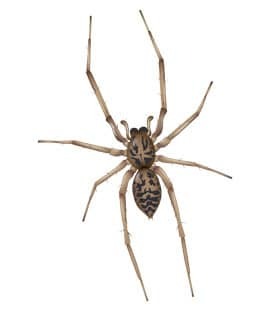
Regarding the most common type of house spider, the American house spider takes the top spot in the list. They don’t grow huge and are much less intimidating, which is one of the reasons why they blend in seamlessly.
Like most spider species, even this one has a round abdomen and measures the size of a nickel when they are a fully grown adult. Also, when identifying marks on the spider, look out for the gray and white spots on the body.
You will commonly find them in dark and secluded areas in the house. So, look for them in the basement or attics. Another notable sign of their existence is the appearance of the web. It is quite messy and tangled, not the clean ones you expect a web to look like.
2. Black Widow
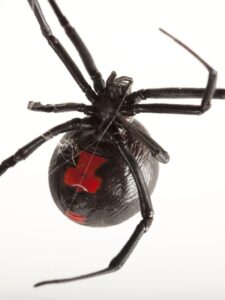
Remember the problematic spiders that we talked about in the introduction? Well, this is one of them. As the name suggests, Black Widow is a deep black spider with a shiny body and a red center in the abdomen. Unlike the circular abdomen of the spider, it has a somewhat hourglass shape around the abdomen.
The bright red mark on the body makes them easy to spot in the hidden and dark areas in the house where they hide. This is also one of the few spider species that can harm people as they are venomous.
If you get bitten by a black widow spider, consult a doctor immediately to get the correct treatment to combat the bite. Some of the common signs from the bite include muscle pain, stiffness, nausea, vomiting, etc. Look out for them in the garage areas or inside the mailbox.
3. Wolf Spider

Although they have a very intimidating name, they are among the least harmful spiders. Instead of poking and prodding at a human, they often keep to themselves, which is a reason enough for you to breathe a sigh of relief if you cross paths with them. It will most likely find it shying away from your vicinity.
Wolf spider isn’t a single spider species. There are 200 others that you need to look out for. However, one of the most common identifying features of the spider is its hairy and woolly appearance. Also, the color scheme is a mix between brown, black, and grey. Also, they seldom create webs to catch their prey. So you won’t find them dirtying the space they live in.
Also read: How to Get Rid of Wolf Spiders? | 8 Potent Remedies
4. Brown Recluse
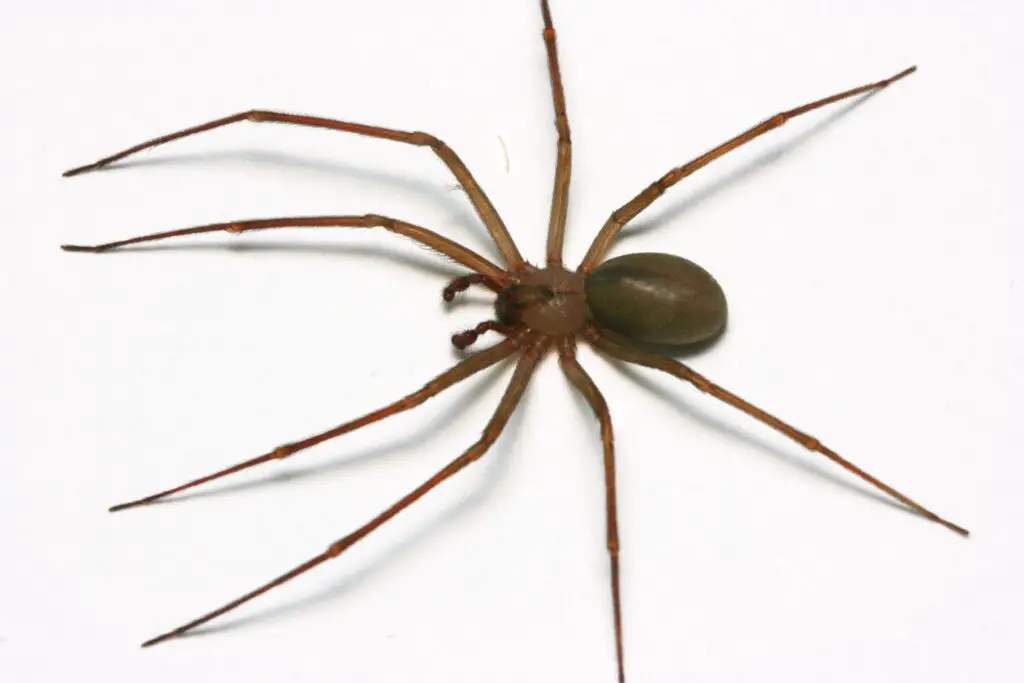
Following in the footsteps of the Black Widow, the Brown recluse is another one of the most common house spiders that you need to watch out for. Their bites are very damaging to the human body and cause severe bites and necrotizing wounds that can even lead to fatal complications.
Besides their dangerous bites, one thing about the Brown recluse that is a standout is its appearance. It has a sleek and violin-shaped body with six eyes. However, one good thing about a brown recluse spider is that they won’t disturb you unless you provoke them.
But, the biggest downside to these spiders is that they love living in ordinary everyday things like towels, clothes, etc. So, if you live somewhere with high spider infestations, we’d recommend shaking the towels and clothes before you wear them.
5. Hobo Spider
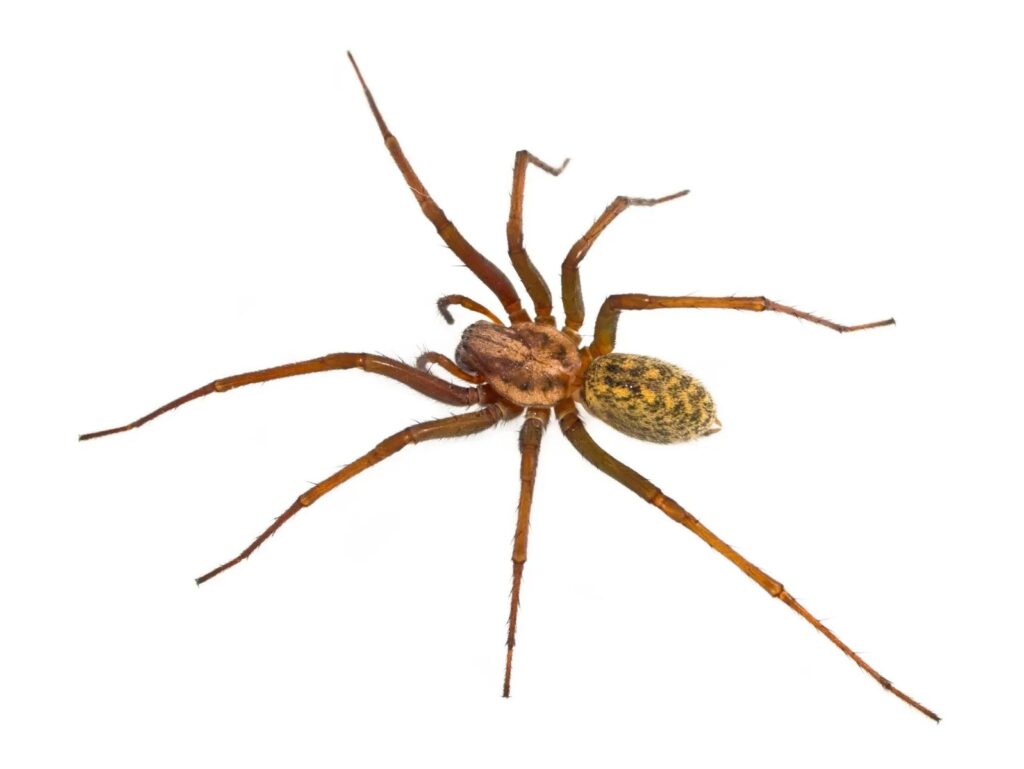
The appearance of a hobo spider is quite different from the rest of the spiders you commonly spot around the house. A hobo spider has a tannish brown color, with light brown or black spotting all over the body. But they don’t have smooth body.
Instead, they have a pretty hairy appearance, which can look gross at first look. Although their bites are harmful, it isn’t as bad as the brown recluse or black widow. You might experience muscle pain at the site of the bite. It also doesn’t require any additional medical intervention. You might apply some ointment to ease the pain and inflammation.
6. Daddy Longlegs
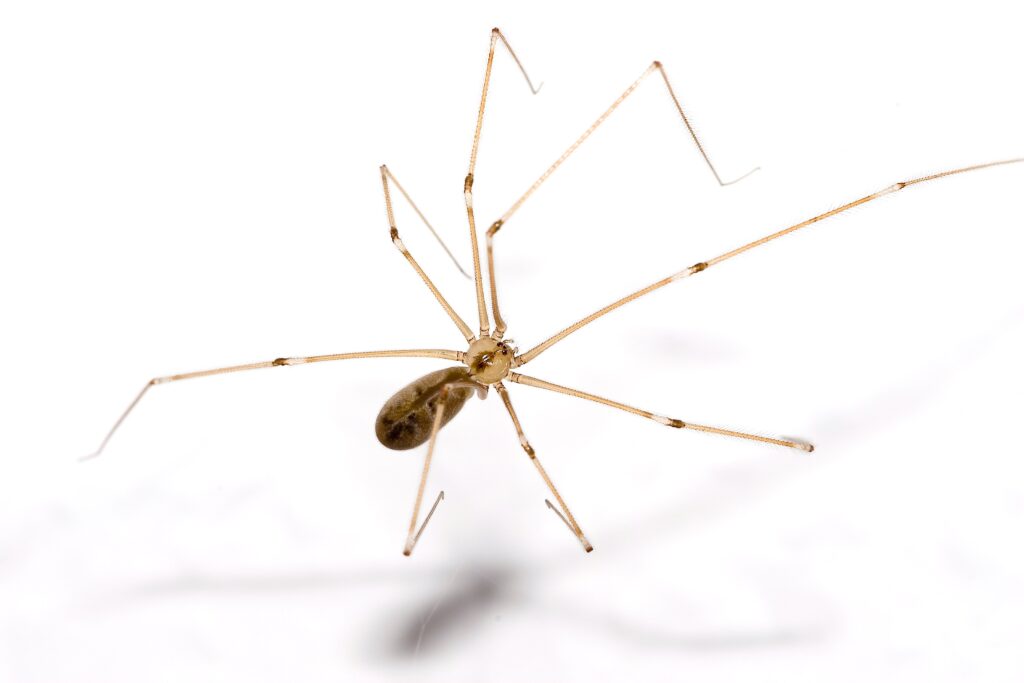
Just like the name, Daddy longlegs is one of a kind. The appearance of this house spider is unlike anything else. Thin and long legs accompany the round and slightly elongated body. Also, they don’t usually live in the open, so you might find them on the lawn.
Despite the long legs and the scary appearance, this house spider is predominantly safe and won’t harm you in any way. They don’t have any venomous impact on humans, so you shouldn’t have any issues if you cross paths with them.
7. Jumping Spider
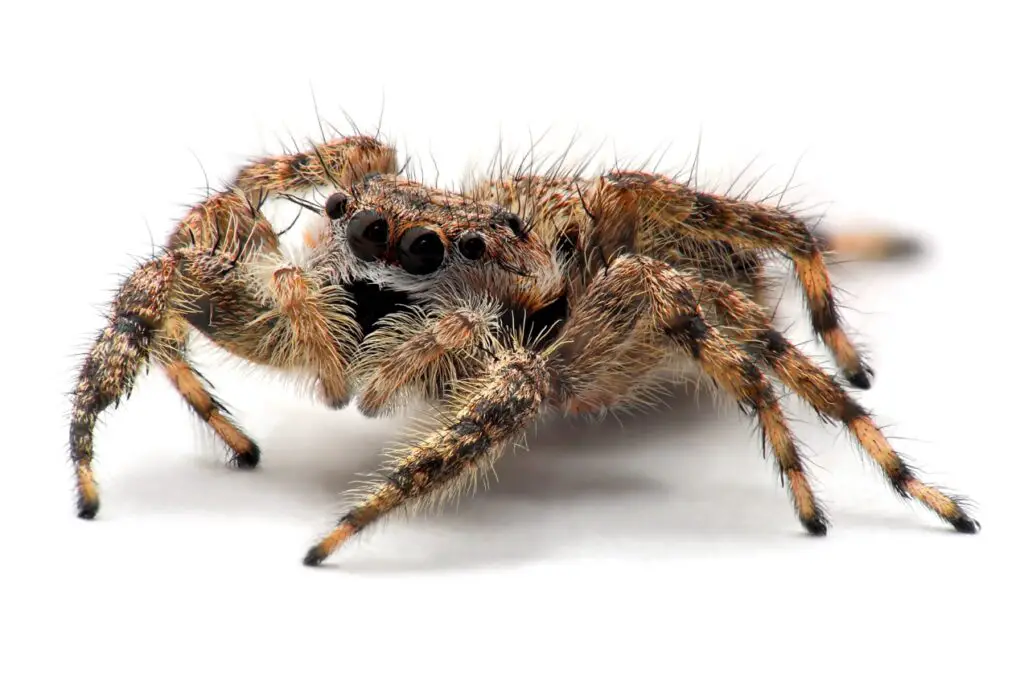
The jumping spider is another common house spider with over 300 different species. The most common type of this spider has a brown and black combined appearance with bright black eyes. The set of front middle eyes is the “USP” of this house spider. They are also a pretty active species of spider that skirts around outdoor areas.
Since they are pretty harmless, you shouldn’t worry about their presence in or outside your house. They often like to keep to themselves, but if you provoke them, they might bite you in defense.
8. Yellow Sac Spider

Last on the list is the Yellow sac spider, which has a unique combination of yellow and red with black spots on the body. The unique trait of this spider is that they hide inside a slimy tent-like enclosure made out of silk. They stay inside the sac throughout the day and escape hiding at night.
Also, when spotting them around the house, look for them in the living spaces or the ceilings. They aren’t entirely harmless, but their bite can result in hospitalizations, especially in people with chronic health complications.
Just ensure that you scope out the living room or bedroom area before you go ahead and sit around. Doing so can help you avoid the complications that come with the spider bite.
Most common house spiders co-exist with us in our homes. There is a mix of good and bad regarding house spiders. Most of them are considered safe, while a few others can be a little complicated to deal with. Ideally, for optimal safety, we’d recommend that you avoid interacting with any spider that you come across in your home. Also, never provoke a spider when you cross paths with them.
Also read: How to Get Rid of Spider Eggs? | Kill them before they Hatch
Frequently Asked Questions (FAQs)
What is the most harmless house spider?
Cellar and common house spiders are considered the most harmless spider species in the vicinity. They don’t cause any dangerous or harmful bites, so you are secure on that spot.
Are house spiders poisonous?
Yes, a few common types of house spiders are poisonous. Some of the most common types are the black widow and brown recluse, to begin with.
Are house spiders friendly?
House spiders, for the most part, are pretty friendly and non-dangerous. However, there is a certain level of risk associated with them that you need to watch out for. If you encounter a type of spider, you don’t know much about, steer clear of them. Don’t provoke or instigate anything.
